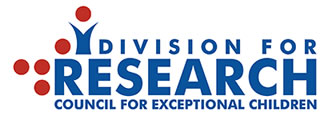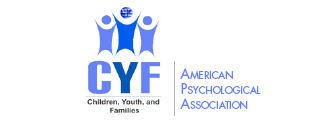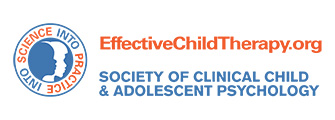
The COVID-19 pandemic has brought with it a host of disappointments, and you may have noticed a spike in tantrums or acting out at home. Birthday parties canceled, no play dates, and stuck inside doing remote schooling! You may be surprised and a bit embarrassed by your child’s tantrums (or fighting the urge to have one of your own). But your child’s anger doesn’t have to be overwhelming when you are equipped with the right strategies. Here are a few practical tips on anger management:
Normalize and Support
It may help both you and your child to know that anger is really common—not just right now, but always. Most children and adults get angry, on average, between once per day to once per week. These angry feelings can range from mild annoyance to intense anger. Anger often arises in response to frustration when we cannot get what we want or when someone says or does something we don’t like. In these situations, anger actually plays an important biological function. It signals to our bodies that something is not right and moves us toward addressing the problem. No matter what is prompting it, anger is a universal human experience that sends us important signals and clues. When psychologists like myself talk to children and their parents about anger, one of the first and most important things we do is validate to reassure them that their feelings are normal. Parents can do the same with their children by helping them label their emotions and letting them know that they are not alone in feeling that way. Example: “I hear that you are really disappointed about the canceled party. It’s ok to feel disappointed and angry. There have been a lot of those feelings for everyone lately because of COVID.”
Calm Body, Calm Words
Although it is important to normalize angry feelings, anger outbursts that are excessive in the situation or result in arguments or even physical fighting need to be addressed by parents. Occasional temper tantrums in a three-year-old or rough-and-tumble play between siblings is just a part of typical development. But if an older child’s tantrums are disrupting school or family activities or if a child is pushing or throwing something in anger and someone may get hurt, these behaviors are concerning. After stepping in and making sure that everyone is safe, parents can let the child know that this behavior (e.g., hitting) is not okay. At a calmer moment, parents can talk to a child about the importance of not only a safe, calm body, but also of calm words. Example: “When you use an angry voice, you make other people feel like they don’t want to work together with you anymore. Let’s stay calm and use our words as best as we can because we want to keep playing together and having fun.” Taking a few calming breaths or going for a walk are simple strategies useful in calming angry mood and avoiding the outburst.
Emotions, Thoughts, and Actions
When talking about anger, it is helpful to keep in mind the difference between emotions, thoughts, and actions. When we first experience it, anger is an emotion. It is something that we feel on the inside. Other people would not know how we felt unless we told them or unless we looked or acted in an angry way. We often label our emotional experiences with “I” statements either out loud or in our head: “I am so angry” or “I feel really mad.” Sometimes we even use metaphors to describe the angry feelings such as “My head is going to explode!” When used the right way, this kind of language can actually be a helpful way to manage our unpleasant emotional experiences. It can help us find a moment to pause, rethink our response, and make a positive plan. Example: “I hate homework. Why do I have to do this when all of my friends are playing Fortnite? I feel like ripping up this assignment… [pause] … well, I better take a breath and finish this quickly so that I have more time to play.” Parents can model this kind of self-talk for their children by talking out loud about their feelings.
When we act in an angry way, our emotions are not just on the inside anymore. Now, other people are involved and might respond, maybe also in an angry way, and then our angry actions can create angry interactions. It is helpful to have a plan in place if you know that a situation with peers or siblings typically causes your child frustration.
Psychologists have come up with a number of social problem-solving tools that children can use before these situations and in the moment to make things better for everyone. Problem-solving tools are like “thinking steps” to follow when there is a problem (e.g., when friends disagree about the rules of a video game or the time when they can all get together online to play).
Step 1. Think about the situation. What exactly happened and why?
Step 2. Think about your options. What are your choices in this situation?
Step 3. Think about the consequences of each option.
Example: “I got angry because I still have homework to do and my friends might start playing Fortnite without me. I could crumple up the homework and yell. Or, I could push through it and finish the homework in the next ten minutes. If I crumple the homework, I will have to start all over again or I might get a time out, which means no playing with friends. If I finish the homework, I might be five minutes late, but at least I will be able to play.” And when the course of action is selected, it is also helpful to take a calming breath, double check that our bodies are relaxed, and strive for our words, gestures and the expression on our faces to convey cooperation rather than confrontation.
Identify the Source
Disruptive behaviors and tantrums may happen because the child is angry, but they can also occur when children are simply bored or tired or for no reason at all. Don’t forget to take these possibilities into account when problem-solving with your child. Help them think out loud about whether they might need a snack or to chill on the couch for a bit. Angry and irritable feelings are an important clue from our bodies, and sometimes there is a simple fix! And sometimes anger can be a delayed response to a previous interaction when we dwell on conflicts or unresolved issues. This tendency to think about situations that triggered anger is also called “anger rumination” by psychologists. These past anger experiences can signal an unresolved issue, and children and their parents can tackle these emotions by focusing on the problem at hand and using calming thoughts and problem-solving strategies.
Next Steps: Patience and Practice Together
Keep in mind that overcoming frustration is really hard to do in the moment, especially when your child is out of practice. Some of the situations that may seem tricky for your child right now, such as paying attention during virtual schooling or turning off a videogame when asked, require skills to manage. And those skills take time to develop! Parents can actively practice and coach their children to rise to the challenge:
- Notice angry feelings as a message that this a problem that can be solved,
- Slow down to figure out what the problem is, and
- Use problem-solving strategies to get to a win-win solution for everyone involved.
When children realize that they can learn to manage their anger, it can boost their confidence and resilience to stress beyond the immediate benefits to their mood.
Proper citation link for this blog post:Sukhodolsky, D.G. and Jordan, R.P.(November 1, 2020). Helping Children when They are Angry. https://infoaboutkids.org/blog/helping-children-when-they-are-angry/
















